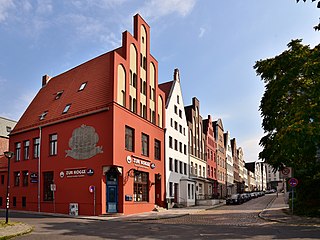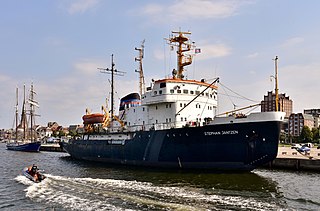Self-guided Sightseeing Tour #2 in Rostock, Germany
Legend
Tour Facts
3.4 km
46 m
Experience Rostock in Germany in a whole new way with our free self-guided sightseeing tour. This site not only offers you practical information and insider tips, but also a rich variety of activities and sights you shouldn't miss. Whether you love art and culture, want to explore historical sites or simply want to experience the vibrant atmosphere of a lively city - you'll find everything you need for your personal adventure here.
Activities in RostockIndividual Sights in RostockSight 1: Alte Christuskirche
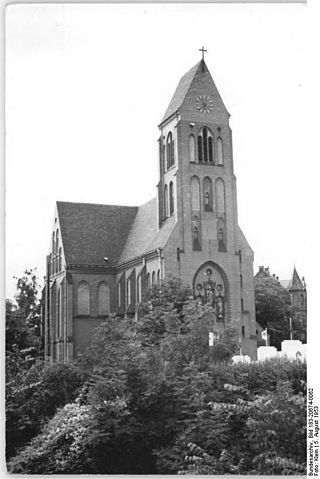
The Christuskirche was a Catholic church on Schröderplatz in the city center of Rostock. It was consecrated in 1909 and blown up on 12 August 1971 for official urban planning reasons. However, the extensive urban redevelopment plans had been stopped internally by the Rostock City Council on 12 November 1970, as their financing could not be secured.
Sight 2: Kröpeliner Tor
Get Ticket*The Kröpeliner Tor was built in the Gothic style around 1270 as the westernmost of the four large gates of Rostock's city fortifications. Even then, it was very large with its two floors and remained one of the most massive of the up to 22 city gates at times. Whether it was named after the small town of Kröpelin, in the direction of which it leads, or after a patrician family of the same name, is still disputed today. It represents the western end of Kröpeliner Straße.
Sight 3: Klosterkirche zum Heiligen Kreuz (Universitätskirche)
The Abbey of the Holy Cross in Rostock, Germany, was founded in the 13th century by Cistercian nuns. It is the only fully preserved abbey in the city. The complex includes the former abbey church which is used today as the University Church (Universitätskirche). The remaining former convent buildings house the Museum of Cultural History for the city of Rostock.
Sight 4: Blücherdenkmal
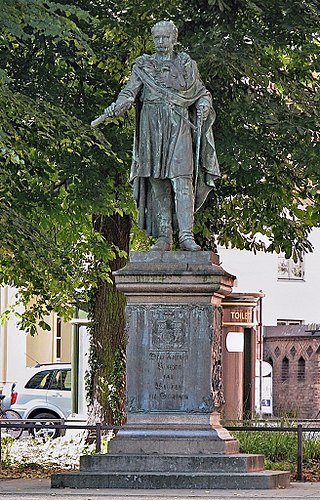
The Blücher monument in Rostock commemorates Gebhard Leberecht von Blücher, the Rostock-born commander of the anti-Napoleonic wars of liberation. The bronze figure stands on a pedestal, the four sides of which are decorated with bronze reliefs. The monument in honour of Rostock's first honorary citizen was unveiled on 26 August 1819 on the Hopfenmarkt.
Sight 5: Hausbaumhaus
Wokrenterstraße is a historic street in the city of Rostock, now known as the Northern Old Town. It connects the streets An der Oberkante in the south and Am Strande in the north and marks the interface between the industrial development and the building fabric, which has been renovated using historic gable elements. This makes Wokrenterstraße unique in Rostock.
Sight 6: Eisbrecher Stephan Jantzen
Stephan Jantzen is a former German icebreaker built by Admiralty Shipyard in Leningrad, Soviet Union, in 1967. After decommissioning in 2005, the ship went through a number of owners before ending up as a museum ship in its former homeport, Rostock.
Sight 7: Fischerbastion
Rostock's city fortifications enclosed the city of Rostock since the middle of the 13th century. After the original city centres of Rostock's three constituent cities had officially united into one city in 1265, the joint, approximately three-kilometre-long city wall was built, which had more than 20 city gates. These were divided into "land" and "beach gates", depending on whether they led to the Mecklenburg hinterland or to the city harbour on the Unterwarnow.
Sight 8: Abraham Michaelis
The list of memorials and stumbling stones in Rostock contains the plaques embedded in the ground in the Hanseatic City of Rostock, which commemorate the fate of people who were murdered, deported, expelled or driven to suicide under National Socialism. As in Gunter Demnig's Stolpersteine project, the stones are embedded slabs in front of the victims' homes or places of work, but are not directly related to Demnig's works. The stones have been laid in Rostock since 2000 on the initiative of the Association of Friends and Patrons of the Max Samuel House. They consist of larger stone slabs that show signs of fracture and abrasion. After Demnig did not agree to the further use of the originally used term "stumbling stone", the stones laid since 2016 are referred to as "memorial stones". The new stones were given a different look and are more weather-resistant than those laid until 2016.
Sight 9: Heiligen-Geist-Kirche
The Holy Spirit Church is a neo-Gothic church building in Rostock, Germany. It was built between 1905 and 1908 on the corner of Margaretenstraße and Borwinstraße in the Kröpeliner-Tor-Vorstadt and is used by the Evangelical Lutheran Holy Spirit Parish, which belongs to the Rostock Provost's Office in the Mecklenburg church district of the Evangelical Lutheran Church in Northern Germany.
Share
How likely are you to recommend us?
Disclaimer Please be aware of your surroundings and do not enter private property. We are not liable for any damages that occur during the tours.
GPX-Download For navigation apps and GPS devices you can download the tour as a GPX file.
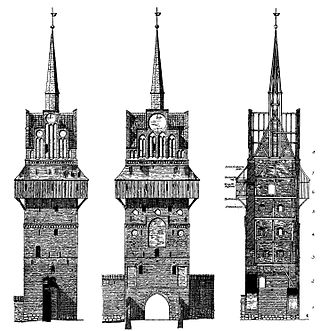
.jpg)
